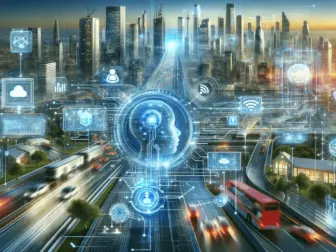Tag - AI and IoT
Blog , January 12, 2024 , AI and IoT, AI in IoT, AI Technology, Future of IoT, internet of things, IoT Efficiency, IoT Security, Predictive Maintenance, Smart Technology
Exploring the Intersection of AI and IoT: Enhancing Connectivity and Efficiency
Artificial Intelligence (AI) and the Internet of Things (IoT) are two of the most transformative technologies of the 21st century. When combined, they have the potential to revolutionize industries, enhance connectivity, and drive efficiency like never before. The integration of AI and IoT technologies allows for the seamless exchange of data between devices and systems, leading to smarter decision-making and improved automation.
One of the key benefits of integrating AI with IoT is the ability to make sense of the massive amounts of data generated by IoT devices. AI algorithms can analyze this data in real-time, extracting valuable insights and patterns that can be used to optimize operations, predict future outcomes, and improve overall performance. This data-driven approach enables businesses to make informed decisions, streamline processes, and drive innovation.
Moreover, AI can enhance the capabilities of IoT devices by enabling them to learn and adapt to changing conditions. By incorporating machine learning algorithms, IoT devices can continuously improve their performance and functionality based on user behavior and environmental factors. For example, smart thermostats can learn users’ preferences and adjust temperature settings accordingly, while autonomous vehicles can adapt to traffic conditions and road hazards in real-time.
Another area where AI and IoT intersect is in the realm of predictive maintenance. By leveraging AI-powered analytics, IoT devices can detect early signs of equipment failure or malfunction, allowing businesses to proactively address issues before they escalate. This predictive approach not only reduces downtime and maintenance costs but also improves operational efficiency and prolongs the lifespan of assets.
Furthermore, the combination of AI and IoT enables the creation of intelligent ecosystems that can optimize resource utilization and enhance sustainability. Smart grids, for instance, use AI algorithms to optimize energy distribution and consumption based on real-time data from IoT devices such as smart meters and sensors. This dynamic approach not only improves energy efficiency but also reduces carbon emissions and enhances the overall resilience of the grid.
In conclusion, the integration of AI and IoT is unlocking new possibilities for connectivity, efficiency, and innovation across various industries. By harnessing the power of AI to analyze and interpret data from IoT devices, businesses can make smarter decisions, automate processes, and drive competitive advantage. As these technologies continue to evolve and mature, the opportunities for leveraging AI and IoT in tandem will only grow, paving the way for a more interconnected and intelligent future.
